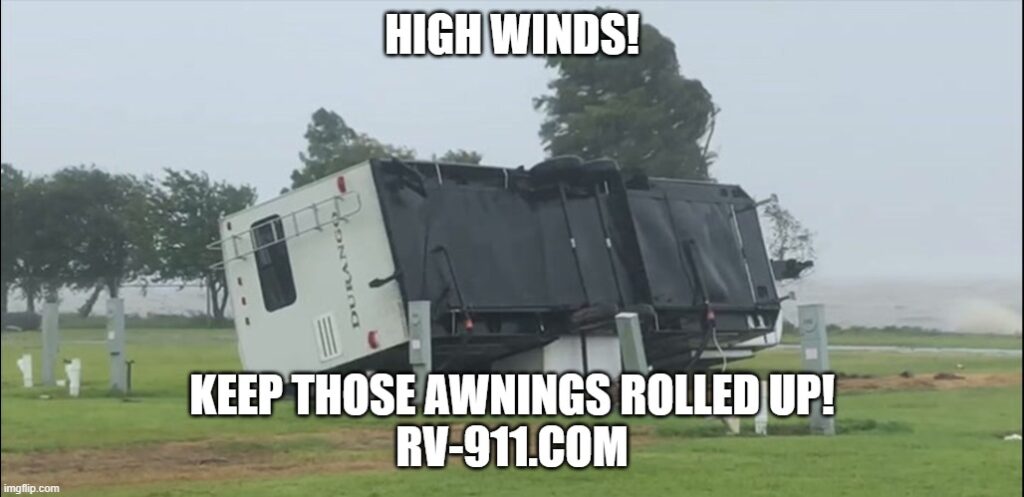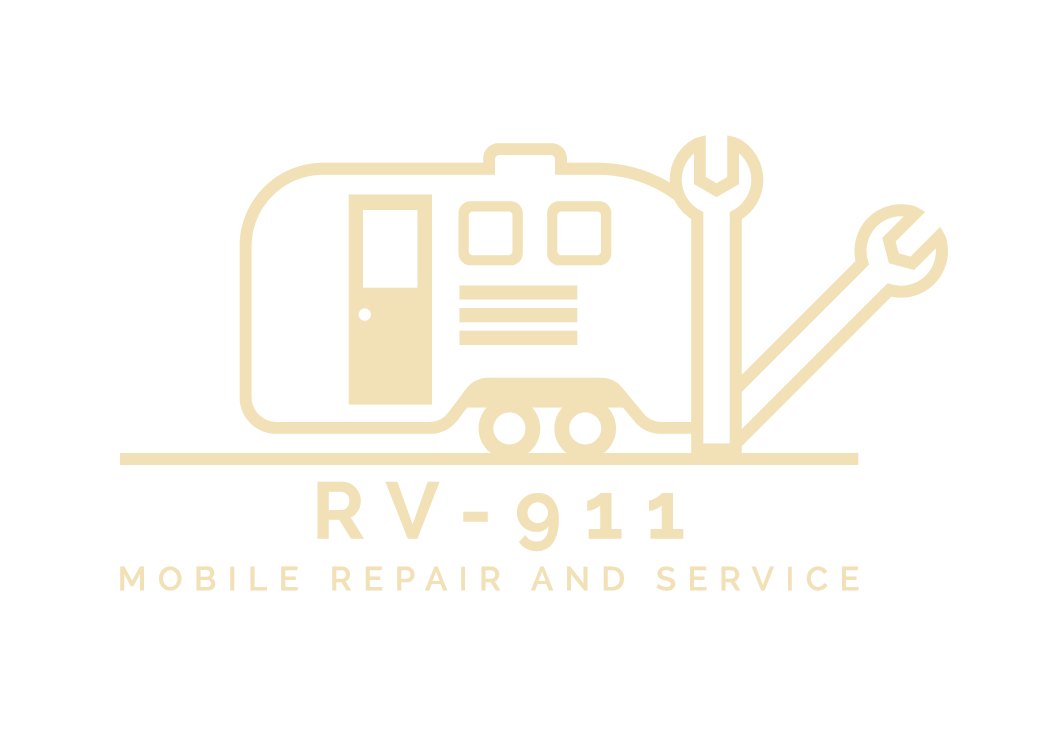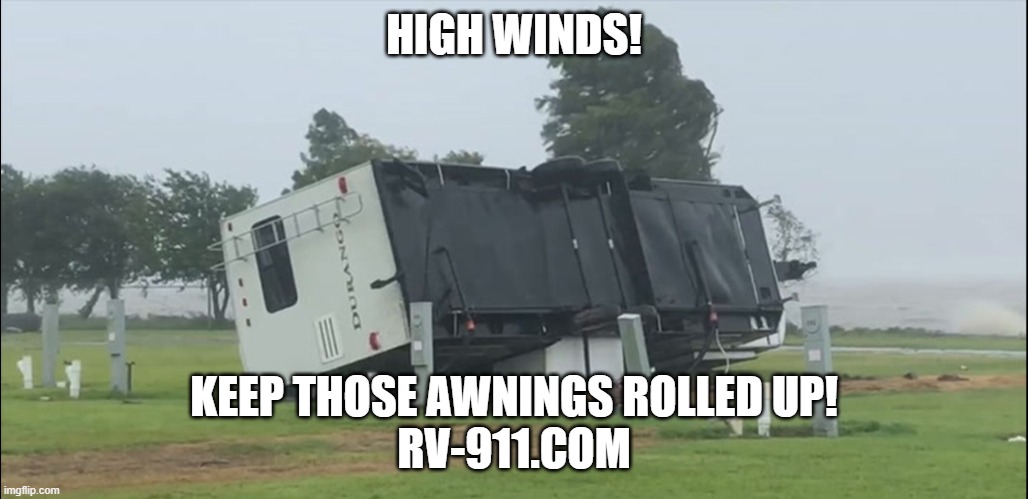Your RV can be affected by as little as a 10 MPH breeze. At wind speeds of 15-to-20 MPH, the effect increases dramatically. Winds near 30 MPH and higher may not be safe for some RV’s to travel at highway speeds, and this is especially true if the conditions include embedded gusts.
Can RV’s flip when parked?
Yes, RV’s can flip when parked however it is far less likely and takes far more wind to flip a camper vs. when driving.
To minimize the chance of flipping while parked, follow the advice below:
- If possible, point the front of the RV into the oncoming wind (just as you do when driving down the highway). Do all you can to avoid letting the wind hit you broadside.
- Stay hitched up if you haul a trailer or fifth-wheel. Extra contact with a heavy object will help you feel more stable inside the RV.
- We all have seen what happens to an umbrella in high winds – Retract your patio awnings. This not only minimizes your surface area and risks of flipping, it helps to prevent damage and ripping of the awning itself.
- Keep your stabilizing jacks down.
- If your RV has air bags, release the air to create more contact with your tow vehicle or chassis.
- Bring in slide outs. This will minimize the surface area battered by wind.
- The last step to feel more comfortable during heavy winds is to move your RV out from under any overhanging trees. You are more likely to have a tree limb fall on your RV during a storm than having wind damage itself.

Driving Your RV in High Winds Techniques
Navigating your RV or camper during high winds requires a different set of skills compared to driving in calm conditions. Here are some tips to keep in mind:
- Reduce Speed: High winds can create unpredictable conditions on the road. Slow down to maintain better control of your RV and minimize the impact of gusts.
- Stay Alert: Pay close attention to weather forecasts before hitting the road, and be aware of wind advisories in your travel route. Additionally, remain vigilant for signs of changing weather conditions while driving.
- Maintain a Firm Grip: Keep a steady grip on the steering wheel, using both hands to control the RV. Gusts of wind can catch large vehicles, so maintaining control is crucial for safety.
- Give Space: Allow extra space between your RV and other vehicles, especially large trucks. Wind turbulence from larger vehicles can affect the stability of your RV.
- Avoid Crosswinds: If possible keep the front end of the RV pointed into the oncoming wind, choose routes that minimize exposure to strong crosswinds. Check your GPS or navigation apps for alternative routes that provide more sheltered paths.
Caring for your RV during high winds is a crucial aspect of safe and enjoyable travel. By being proactive and taking necessary precautions, such as rolling up awnings and adopting proper RV driving techniques, you can protect your vehicle and ensure a smooth journey even when faced with challenging weather conditions. Remember, preparation is key, and a little extra effort in safeguarding your RV can go a long way in preserving both your vehicle and your peace of mind on the open road.

